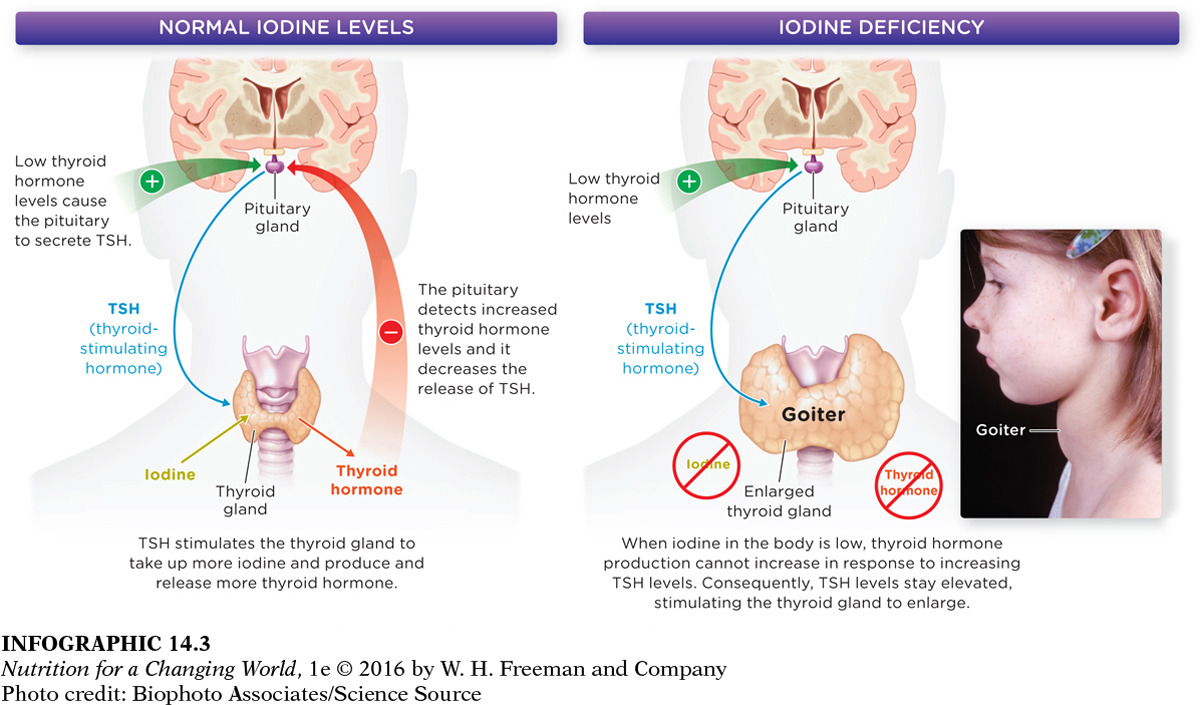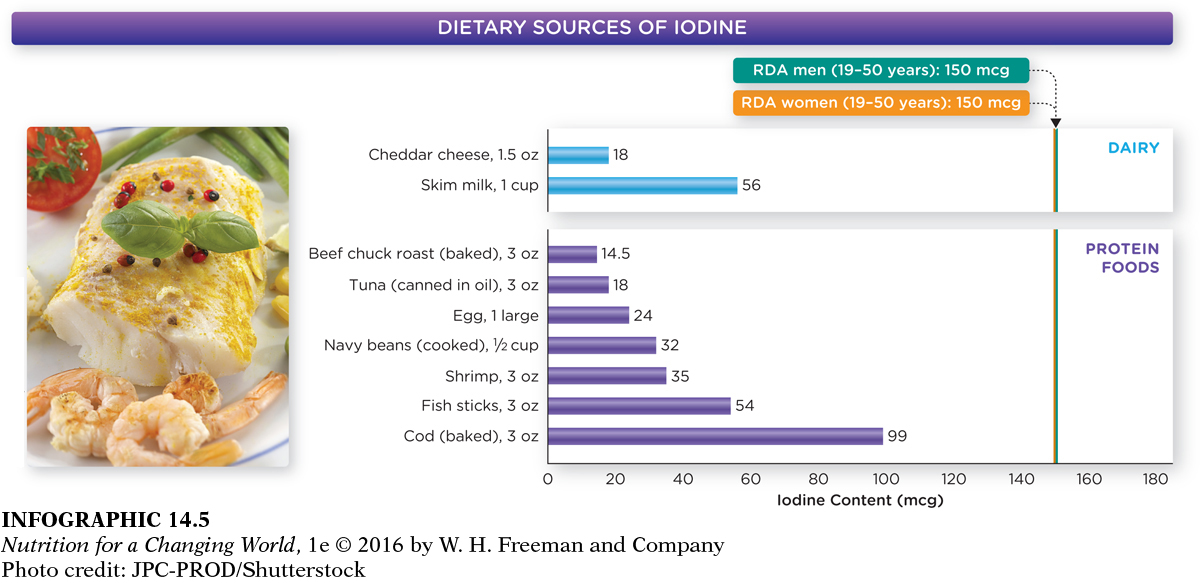IODINE: SOURCES AND FUNCTIONS
The iodine content of food depends on the iodine content of the environment it comes from, which varies from region to region. The highest naturally occurring concentrations of iodine are in foods from the sea, such as fish, shellfish, and plants (e.g., seaweed, algae), because the ocean contains considerable iodine. In part because the problem of goiter was so widespread, the U.S. salt company Morton began to add iodide to its salt in 1924, and the U.S. Food and Drug Administration recommended that the product be labeled with the following message: “This salt provides iodide, a necessary nutrient.”
315
Although iodine is added to most table salt in the United States, only 15% of daily salt intake comes from iodized table salt. The majority of salt intake in the United States comes from processed foods, but food manufacturers often use noniodized salt. Milk and processed grain products provide the majority of total iodine intake in the United States (about 70%). Iodine in milk originates primarily from the fortification of animal feed and the use of iodine-
THYROID GLAND a gland located in the neck that releases the iodine-
THYROID-
Iodine is an essential component of thyroid hormone, thus it is required for normal function of the thyroid gland. The pituitary gland in the brain secretes thyroid-

Question 14.1
 Graves’ disease is caused by the body’s immune system producing antibodies that the thyroid gland detects as TSH. Why does this cause the thyroid gland to enlarge as well as produce excessive amounts of thyroid hormone?
Graves’ disease is caused by the body’s immune system producing antibodies that the thyroid gland detects as TSH. Why does this cause the thyroid gland to enlarge as well as produce excessive amounts of thyroid hormone?
In Graves’ disease, antibodies that mimic thyroid-
When individuals do not get enough iodine, the thyroid gland cannot produce adequate levels of thyroid hormones. This can lead to goiter or hypothyroidism (underactive thyroid), which slows the metabolic rate. Goiter can occur when the thyroid gland—
316
CRETINISM a condition characterized by arrested mental and physical development; can be caused by severe iodine deprivation during fetal growth
The milder iodine deficiencies that have developed in the United States are most common among pregnant women, as the RDA for iodine during pregnancy is 50% higher than it is for nonpregnant women. Lack of iodine can adversely affect brain development and growth of the developing fetus. If a pregnant woman is extremely deficient in iodine, then cretinism can develop in her child, characterized by mental retardation, deafness and muteness, stunted growth, delayed sexual maturation, and other abnormalities. Less severe iodine deficiencies can affect neurological development in young children, resulting in below average intelligence. (INFOGRAPHIC 14.4)

Iodine recommended intakes
Because of these problems, iodine supplements are sometimes recommended for pregnant women and women of child-

■ ■ ■
Today, there is no longer a “goiter belt” in the United States thanks to iodized salt; however a major public health concern worldwide is iron deficiency, which is generally caused by a person’s increased demand for iron (because of blood loss or growth) or through insufficient intake or absorption. The World Health Organization considers iron deficiency to be the number one nutritional disorder in the world, affecting developing and industrialized nations.